11 Brain Exercises That Ensure Memory Improvement
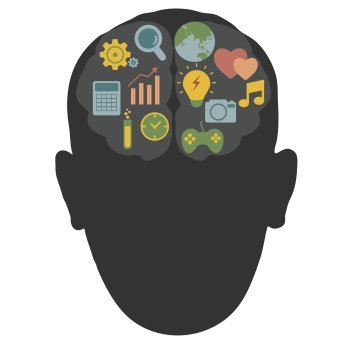
Lots of people do brain exercises, often in the form of brain games.
You’ve probably even tried a few, right?
That’s all fine and dandy, but there’s a catch:
Playing mental exercise games on your “smartphone” is not necessarily brain exercise.
It might not even be mentally stimulating.
Not by a long shot.
But don’t worry.
I’m about to reveal some memory exercises that actually work. That’s because they really do exercise your brain. I’ll show you how to put them into action and also help you understand why they boost brain health.
Yours Free: A Private Course With Cheat Sheets For Becoming A Memory Master, Starting From Scratch.
>>> Click Here For This Special Free Offer.
To help you navigate this post, here’s a preview of what you’re about to discover:
Brain Exercise and Memory Exercise? – What Makes Them Good?The 11 Best Brain Exercises For Memory ImprovementWhat Is The Best Brain Activity For You?How To Stimulate Your Brain To Be Smarter and FasterHow To Improve Concentration And FocusBrain Exercise And Memory Exercise? – What Makes Them Good?Let’s face it:
Smartphone-based brain games don’t exercise your brain at all.
Any exercise you get is quickly wasted on the ads you’ll be shown and tracking graphs that no robot can accurately help you understand.
Instead of helping you, brain game apps train you to get good at completing tasks within the world of those apps. This is called context dependent memory.
Any mental fitness you enjoy from such software rarely applies to the aspects of your life where you need to be sharp, such as during conversations or on the job.
Bottom Line: Use Concrete Brain Exercises And Avoid Abstract OnesIf you’re exercising your brain on an abstract level but not directing the fitness at specific life improvement goals, you’re missing out. Your brain fitness must be targeted at specific goals to get tangible results and avoid cognitive decline.
Real brain exercise must also follow these four rules:
It always involves new learningIt is always reasonably complex (and sometimes unreasonably complex)It is always varied and interestingIt is always engaged in frequentlyWithout following these rules, it is unlikely that the exercise will improve your memory.
But on this page, I promise you will experience a number of fun exercises that stimulate both short-term memory and long-term memory.
Ready?
Let’s get started!
How to Exercise Your Brain: The 11 Best Brain Exercises For Memory Improvement1. The 4-Details Observation ExerciseGary Small talks about memorizing four details of people you encounter out in public.
For example, let’s say someone is wearing a black hat, has blonde hair, a triangular ring, and a green sweater.
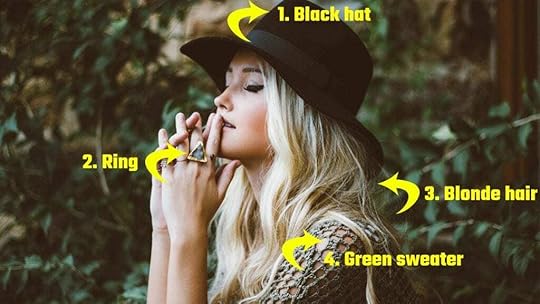
Illustration of the 4 Details Exercise
The goal is to observe the details first and then recall them later.
Some scientists call memory exercises like these “passive memory training.”
They’re passive because you’re not using any special memory techniques. You’re just asking your mind to do what it was designed to do: to remember.
Why does this matter?
It matters because we don’t ask our minds to practise observation enough.
Because we don’t practice observation, we fail to observe and receive the memory exercise simply asking our brains to recall information brings.
We also fail to observe things that we aren’t seeing – making it impossible to make mental pictures of them. I teach you all about how to do that with these 3 simple visualization exercises.
If you’d like to be a better observer of the world around you, noting and visualizing details will help far better than brain training software like Cogmed.
It’s also scalable. You can start by observing just one person per day. Once you’ve gotten good at recalling four details of just one person, you can add more information or more people (or both).
You can scale this memory exercise even further by memorizing the details using a Memory Palace.
If you like, you can also notice details about buildings, cars, movies or series and foods that improve memory to boost your cognitive abilities.
But focusing on real people is the more potent memory exercise. Being observant of others around you is a great social skill.
2. A Number Exercise That Will Skyrocket Your ConcentrationI can’t emphasize this enough:
Numeracy is a powerful skill to boost your cognitive abilities. It’s something I work on to boost logical thinking – both with and without memory techniques in play.
“Add 3 Minus 7” is a fun numerical memory exercise you can try today. To get started, all you do is pick any 3-digit number. Then, add 3 to that digit 3 times. Then minus 7 from the new number 7 times.
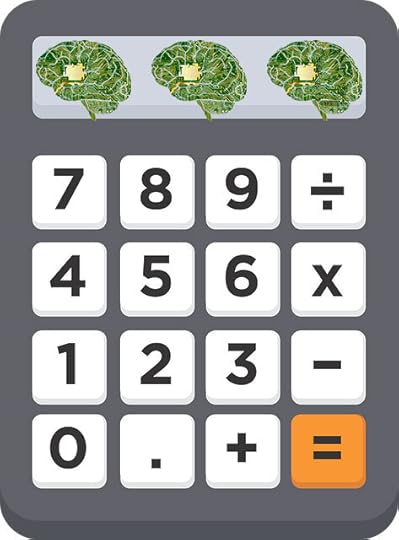
Repeat the process at least 5 times and pick a new 3-digit number the next time. You can also take a different route and start with a 4-digit number and use other numbers to challenge your working memory further.
For example, you could start with 1278 and add 12, 12 times and minus 11, 11 times.
It’s up to you and the amount of numbers to dictate the level of challenge. Remember, this brain exercise strengthens your working memory because of the amount of detail you need to hold in mind to complete it.
Yours Free: A Private Course With Cheat Sheets For Becoming A Memory Master, Starting From Scratch.
>>> Click Here For This Special Free Offer.
In a book called Happiness Beyond Thought, Dr. Gary Weber shares a powerful means of experiencing your conscious mind directly.
It sounds deceptively simple, but it’s actually quite a challenge.
To complete the exercise, you count from one to ten.
But instead of visualizing each number, you skip the even numbers on the way up.
By “skip,” you don’t count 1, 3, 5, etc.
You actually pause on where the even digits should be. But you actively try to not represent them.
There are a few variations on this technique, so if you want more nuance, give this tutorial a view:
https://www.youtube.com/watch?v=p7NPi...
Important Tip: Don’t make the memory exercise so easy that you get bored with it. We all need challenge from our brain exercises in order to grow.
You can also skip using the alphabet by exploring a Renaissance brain exercise called The Field:
https://www.youtube.com/watch?v=eRFNX...
5. Repeat What People Say In Your Mind
We all know in our hearts that no one is really listening when we speak. And that’s sad.
But here’s the good news:
You don’t have to be another person who is just nodding your head like a puppet while actually thinking about something else.
You can train your brain to focus on what people are telling you and remember everything they say.
It all begins by creating presence in the moment in an easy way:
Follow the words being spoken to you by repeating them in your mind.
For example, imagine that someone is saying the following to you:
“Tomorrow I want to go to a movie called Memory Maverick. It’s about a guy who cannot forget. He’s hired by a group known only as ‘The Agency’ to infiltrate a competitor. But once the hero learns the secrets, he doesn’t want to hand them over. But since he can’t forget, The Agency starts making his life miserable.”
All you would need to do to complete this brain exercise is repeat everything the person is saying silently in your mind. You’ll automatically boost your cognitive function and remember more by doing this.
It works because simply asking your memory to recall information exercises it. The more challenging the information, the more exercise your brain will get.
5. Visualization Exercise Secrets Of A Memory MaverickTo remember even more, you can practise creating pictures in your head.
But go beyond the visual. Also add in multisensory elements.
For example, using the sample conversation above, you might see an image of Mel Gibson as he looked in the movie Maverick trying to remember something. Imagine that you are trying to feel what this is like as if you were Mel Gibson yourself.
Or you might get a picture in your mind of an agency building and scenes of evil men in suits torturing the hero. Feel their clothes on your skin. Smell the air through their nostrils. Hear the world through their ears.
For more cognitive exercises on remembering what people are saying with visualization practice, check out this interview with Jim Samuels on the Magnetic Memory Method Podcast. He has some great ideas, and the benefits include:
Being more present.Remembering more of what was said.Showing people that you’re interested in them and their lives.Easing conflicts when they arise because you remember the issues in greater detail.As people speak, they “translate” their ideas into pictures, feelings, related concepts and even tastes and smells.
Take this training seriously:
You’ll feel better about your connection to people because you’re really with them.
6. The Metronome-Clapping ExerciseBack in grad school, I had a great professor named Matthew Clark. For some reason, he told our class in Classical Literature about a great concentration exercise that I’ve practiced ever since.
It’s simple: You put on a metronome at a slow speed and then practice “covering the click.”
Such neurobic exercises can help us focus on things that our brains have been automated to perform. The increased focus that neurobic exercises develop helps you zero-in on your surroundings to boost your memory skills.
If you’d like a practical example of the metronome exercise on video, please check this out:
https://www.youtube.com/watch?v=qaiF3...
To be clear:
I don’t think this memory exercise helps memory in any direct way.
But it is excellent for improving concentration and presence.
Here’s why these mental states matter:
Both concentration and presence are cognitive skills we all need. The more concentration and presence we have, the more we can remember by default.
The better you get at this mind exercise, the longer the amount of time between clicks you should place. Accurately covering the metronome with a minute between clicks would be impressive!
7. Create A Memory PalaceThe ultimate brain exercise to boost overall cognitive function is also the easiest. It involves nothing more than a simple drawing that follows some simple principles.
What’s a Memory Palace?
It’s a mental recreation of a familiar location. You use it to chart out a simple journey that you can follow with your mind.
Then, using associations, you “place” mental images along this journey that help you remember things.
Why is creating a Memory Palace such a powerful memory exercise?
First, complete my FREE memory improvement course and find out for yourself:
Second, creating a Memory Palace draws upon your spatial and visual memory.
It’s also a great recovered memory and autobiographical memory exercise.
As far as mind exercises go, the Memory Palace training exercise works kind of in reverse.
Why?
Because you’re accessing visual memory cues that are usually blueprinted in your mind outside of your awareness.
Think about it:
You’ve rarely gone into a new home or store with the conscious intent of memorizing its features.
Yet, if you think back to the last home of a friend you visited, here’s a fact:
Most people can recall an insane amount of detail with visual memory. Creating a Memory Palace lets you exercise that inborn ability.
You can even use it for memory and learning stunts like memorizing all the Prime Ministers of Canada.
Second, creating a Memory Palace is creating a tool that you can use for life. Once you have one and you’ve mastered using it, you can create dozens more.
And if you can do that, you can do great things with your memory, like how Matteo Ricci learned Chinese in record time. You can also at events and accomplish any memory-associated goal.
And what goal doesn’t involve memory?
8. Learn a Foreign LanguageYou’ve probably heard that bilingualism is good for the brain, right?
It is, and one of the reasons why is that you are continually asking your brain to recall information.
Take advantage of your brain’s neuroplasticity and learn a new skill at any age to keep it active and ticking!
This is a great brain exercise for people of any age because it keeps you talking with people.

Regular conversation also helps stimulate the production of healthy chemicals for better mental health. Ideally, you would have conversations about books you’ve read. That way you dig into memory at multiple levels, especially verbal memory.
But if you don’t like to talk, you can also sing. Or do both. For a double-whammy of health and brain benefits, singing has been shown by researchers like Gunter Kreutz to increase cortisol and other chemicals involved in healing.
For this reason, singing in a foreign language you’re learning can increase the impact and effectiveness of this brain exercise.
However, that isn’t all – you get more health benefits.
Researchers conducted a study that found that learning a second language can delay the onset of cognitive impairment like dementia in Alzheimer’s disease by around 4-5 years!
The best part?
Learning anything new is good for your brain!
Whether it’s learning to play a new musical instrument or working with your non-dominant hand, new neural pathways will form – helping you boost your brain power.
9. Mind Mapping For Maximum Brain HealthIt’s no secret that I’m a huge fan of Tony Buzan’s approach to mind mapping.
And that’s because I used to mind map in ways that weren’t effective at all.
But after training with Tony and world mind mapping champion Phil Chambers, I discovered a new route and I’m way better at the practice and share it in real-time on my YouTube live streams:
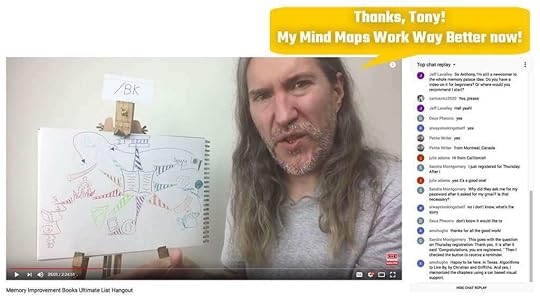
What is mind mapping?
It’s a graphic means of brainstorming and planning. You can even use it for note taking and review.
The question is…
Why is mind mapping great for boosting cognitive function?
One reason Tony Buzan hints at is very compelling. The process reproduces the role of nerve cells on the paper.
Think it through:
Just as a brain cell has a central nucleus with synapses that flow outward like a river, the mind map has a central idea that feeds several streams with mental power. By creating mindmaps, you’re making it easier on your brain – thereby increasing its processing speed. Just like more water increases the flow of a stream.
Interested?
Give these 10 mind mapping rules a try whenever you want a cognitive training workout.
Yours Free: A Private Course With Cheat Sheets For Becoming A Memory Master, Starting From Scratch.
>>> Click Here For This Special Free Offer.
I love physical activity like aerobic exercise.
And not just to workout my muscles and boost my heart rate.
Physical activity is a great place for including a mental workout.
For example, you can memorize the number of sets and reps you complete using the Major System.
You can also rehearse the content in your Memory Palaces during and after your workout. I often recite Sanskrit I’ve memorized or perform number skipping while I’m at the gym.
11. Memory-Based MeditationDid you know that you can clear out old memories that you’d rather not have?
You can even help reduce symptoms of PTSD and depression.
These outcomes are produced by creating a “Happy Memory Palace.”
I started doing this after reading Tim Dalgleish’s research on using the method of loci to help heal the mind.
For this exercise, you’ll need a Memory Palace and 5-10 happy memories. Then, along the journey, you’ll place each memory in a strategic location.
In my Happy Memory Palace, I used a small office I had when I was a graduate student. On the first corner, I placed a memory of when I graduated with my PhD.
https://www.youtube.com/watch?v=vs9UH...
Then, when I feel down, I revisit this Memory Palace and start feeling better quickly. The trick is to keep creating these Memory Palaces. When something good happens to you, the brain exercise is to transport it into a Memory Palace and revisit it often so that the memory sticks.
What Is The Best Brain Activity For You?At the end of the day, memory exercises are best when they’re applied to problem-solving in our daily life.
For example, forgetting important details can turn our lives upside down.
You can now choose a brain activity that can help prevent memory loss while showing you how to be happy and positive.
Not being able to focus on numbers leads us to making all kinds of mistakes that prevent us from memorizing information quickly. The simple game you’ve just learned is just one step towards improved numerical memory skills.
You’ve also learned to listen better, be more present and develop concentration for extended periods of time.
In many ways, repeating the words of others in your mind or “covering the click” can help you meditate and practice mindfulness – skills known to improve memory.
But what matters above all is that the best memory exercises are the ones that you actually use. If sudoku is what works, then go for it. If it’s brain teasers – then that’s fine too.
Remember, you cannot get the benefits from them without consistent application.
Yours Free: A Private Course With Cheat Sheets For Becoming A Memory Master, Starting From Scratch.
>>> Click Here For This Special Free Offer.
Now that you have this pile of authentic exercises, consistency is the key.
In order to show up regularly enough, I recommend that you start tracking your time.
That’s right. Instead of making a to-do list that you’ll probably ignore, start by writing down where you time has gone on a day by day basis.
For this, I like to use a Snapshot Journal.
These are wonderful tools because you can keep them on your desk and see them every day. They remind you of your goals for you.
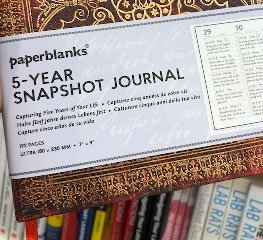
The Snapshot Journal I’m using
You just fill them out with what you’ve accomplished during the day, and each day gives you a reminder of how far you’ve come. You can see your progress for up to five years at a glance.
I haven’t missed a day and am in my fourth year now of the current Snapshot journal. It’s wonderfully fulfilling to see all of the many accomplishments build up over time.
How These Free Brain Games For Adults Improve Memory and ConcentrationFor example, thanks to constantly reminding myself of my goals, I’ve found time to practice juggling, writing with both hands and writing backwards to involve both my brain and body.
As you can see in this brain exercise challenge, I’ve managed to bring both worlds together in a way that is easy and fun.
You can also get out to art galleries. Then, exercise your memory by recreating a painting in your mind. I’ll walk you through this exercise here:
https://www.youtube.com/watch?v=uJbRK...
Not only will you get a great memory workout. Visiting an art galley gives you physical exercise too.
The Truth About How To Improve Concentration And FocusIt’s not just about concentration exercises.
It’s also about making sure we don’t fall into the traps of smartphone and video game addiction.
Sure, you can get some great brain fitness reading from the Kindle app or solving online crossword puzzles. Maybe you excel at Nintendo’s brain age game.
But if you’re constantly interrupted by notifications on your reading device, you’re damaging your focus and concentration more than helping improve it. Memory exercises truly require the right environment.
Brain Rehabilitation Exercises For Overcoming DepressionJust so you know, the reason I’m so passionate about sharing my knowledge about how to improve brain function, it’s because these activities saved my life.
I once nearly lost my life. But these exercises helped save me along with general memory improvement efforts, like those I discuss in my book, The Victorious Mind.
You might also want to consider learning more about vitamins for memory improvement because the ones you’re taking now might be causing more damage than good to your cognitive health.
If you’re looking for information on how to boost brain activity, definitely add dietary considerations to your neurobic exercise routine.
https://www.youtube.com/watch?v=2MlDe...
Summary Of The Most Potent Brain ExercisesThe 4-details mental workout is excellent for “passive memory training.” Number exercises result in better working memory, an increased attention span and greater numerical memory skills.Repeat and Recall exercises also increase your concentration and ability to pay attention to others for longer periods of time. You’ll also remember more.Create images, associations and other related sensations as you listen to people speak. This will create intense brain fitness to reduce the chances of memory impairment.The Metronome exercise. This simple device can be found at any music store or downloaded as an app. “Covering the click” has many mental benefits and provides a fun challenge as a solo effort or group activity. You can perform such neurobic exercises several times a day.Create and use Memory Palaces. Both of these activities create a lot of mental exercise.Learn a language consistently over time. It might not feel like brain workout, but it is and the benefits of being bilingual provide ongoing mental benefits. These include helping with Alzheimer’s disease, dementia and cognitive decline associated with brain age.Mind Map. There are many interesting rules you can follow to maximize the process. Following them is part of what creates the mental benefits of this creative brain game.Use memory techniques while getting physical fitness. Using your body and mind at the same time maximizes your time and is a win-win for total psychological and physical optimization. Don’t forget to sleep enough, though!Brain exercises must follow the four rules outlined above in order to qualify.Improve Your Memory With GamesWhat are your thoughts about the brain exercise principles discussed in this post? Are these amazing free brain games, or what?
Do you think these are activities you will bring into your life? Did you develop better memory? Is there anything I’m missing?
Let me know in the discussion area below and I’ll gladly respond and update this post.
In fact, for more brain training games that really improve your memory, please read Brain Games: The Truth You Need To Know For Memory Improvement.
Or, if you’d like more practical, hands on help, join my…
Brain Exercise Bootcamp!
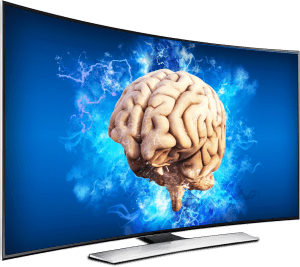
This exclusive training comes packed with over 40 brain and memory exercises. You’ll be taken step-by-step through everything you need to create a detailed program of fitness that keeps you focused and sharp for life.
So if you enjoyed the 11 memory exercises on this page, don’t hesitate to dive in deeper and enjoy 40 more! Take your brain for a spin!




